Connecting the FiiO Q5
Inputs
Since the FiiO Q5 was equipped with a full range of inputs, it’s pretty easy to add it into your actual setup. To get the most of it, you’ll have to plug it through its digital input :
- USB : on Mac/iPhone/iPad you just have to connect it with the adequate cable. For your iDevice there is a lightning-to-micro-usb cable provided in the box, but you can also use the all-mighty Camera Connection Kit from Apple, your call. With a PC or Linux, you have to download and install the latest FiiO Driver, unless you run windows 10 which seems to recognize the Q5 automatically. Lastly, some players with USB Audio-out can also be connected to the FiiO Q5 through USB.
- Optical/Coaxial : if you prefer to connect through the good old Cinch/Toslink input, it’s also possible. FiiO provides the jack-to-cinch adapter and the Toslink-to-mini-toslink adapter, allowing simple connection from a DAP or a high-end CD-Player for instance. Keep in mind, that Optical In is limited to 96kHz/24bit playback and Coaxial In to 192kHz/24bit, if you want to go higher with DSD files for example, DSD is your only solution.
- Bluetooth : if you want to go wireless, the FiiO Q5 also provides Bluetooth, in its latest 5.0 form. Supporting AAC, SBC and aptX, you can virtually connect any modern smartphone/tablet and computer with Bluetooth. Sadly, it doesn’t support apt-X HD from Qualcomm. So no 24bit streaming here but you can still get some good old 16bit/48kHz without quality loss. That means a FLAC and Tidal full experience, plus controls on the DAC, isn’t that cool ?
Bluetooth isn’t audiophile at all, but it’s damn useful !
If your final intent is to use the FiiO Q5 as a portable amp, it’s also possible. The Line in using the same port as the other digital inputs, on the top of the device. Results depend on the module you use but it’s a simple solution for those who just want more power with their DAC, although better solutions must exist I think.
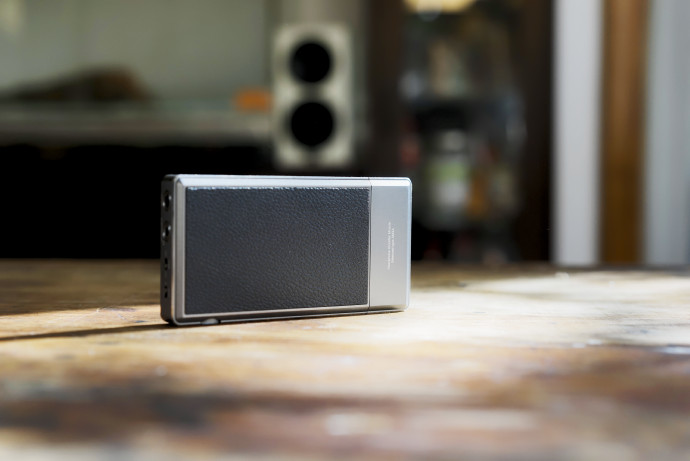
Outputs
The output options of the FiiO Q5 are vastly dependant of the amplifier module you choose, just like with the FiiO X7 Mark II
With the AM3A default option, you get the classic 3.5mm Jack for TRS headphones and the balanced output wired in TRRS 2.5mm Jack. You can’t use them both at the same time, so forget about sharing the FiiO Q5 with someone else on a trip.
Finally, you have a Line Out, used to connect another amp to the DAC, it’s also a classic TRS output bridging the two AK4490 chips used inside the circuit. The signal was clean with no audible hiss so you can even use it with a big desktop amp once you get a RCA-Jack cable.
Bundle
As usual, FiiO offers a lot with its Q5, the Bundle being pretty rich. “A wealth of accessories for a premium experience” is what I quote from their website, and for once a brand is not lying about it.
In the box you get :
- 1x FiiO Q5
- 1x FiiO AM3A module, already screwed to the DAC
- 1x Jack-Jack cable to connect a DAP to the Q5
- 1x lighting to micro-USB cable for iPhone/iPad connection
- 1x Coax-Jack cable to connect a Digital source
- 1x Mini-Toslink to Toslink adapter to connect a Digital source, if you have a MacBook you can just use a mini-Toslink cable directly
- 1x micro-USB cable for Data and charge
- 4x Silicon Bands and a silicon pad in case you attach it to a smartphone
- 1x Torx screwdriver to unplug/plug the amp module
- 1x mesh pouch for travel
If I were picky I may say it lacks a micro-USB to USB-C cable, but I’m more than happy to get a lightning to micro-USB cable, far more practical for me, an iPhone user.

Module collections
Actually, FiiO offers eight different modules for its Q5 and X7 Mark II :
- AM0, an non-amped module, for DAC purpose
- AM1, mainly for IEM, using an AD8397 as current amplifier
- AM2, a more versatile module, more powerful with a 250W current ouput
- AM2A, like the AM2 but with even more power, 420mW current output, it’s suppose to blend the AM1 and AM2
- AM3, the first generation of balanced output module, a good module I used a lot on my first gen X7
- AM3A, the second generation of balanced output module, the default option for both Q5 and X7 Mark II, main differences come from the unbalanced ouput, more refined
- AM5, the “Monster Drive” which shall be used with big cans, battery life was miserable with the X7, so expect the same with the Q5
- AM3B, the latest module, still balanced but now with the hot 4.4mm Pentaconn Balanced output. I couldn’t try this one, as I don’t have any headphone with this ouput yet
Battery Life
FiiO announced 10h of continuous playback for the Q5, if used as a DAC/Amplifier. The same battery life is expected with Bluetooth connection and twice the time if used only with the line input.
In real life, it is depending of your playback volume and the file type played. With my usual CIEM I managed to get a full day of listening, around 12h, before the FiiO Q5 stopped and still 10h with my Sennheiser HD800S in Low Gain. That’s quite enough for me, my phone is lasting only for 6h if I use it for music at work…
The FiiO Q5 should carry on for a full day
The massive 3800mAh battery is slow to charge thus, even with a 2Ah/5V charger you have to expect a few hours to charge the device completely. There’s no quick charge here, too bad.
For those who might ask, you can’t charge the Q5 once plugged to a smartphone, neither will it charge the phone, it’s a pure digital exchange.

Carrying the FiiO Q5
The FiiO Q5 weights 195g and is 16mm thick, a classic value for this kind of device. If you add it to a smartphone or a DAC, as its supposed, you get a big old audiophile sandwich which can’t get in any jeans pocket as far as I know. A pouch, backpack or suitcase is highly recommended if you want to combine it through USB, otherwise you’ll need to wear a jacket all year long.
Once connected in Bluetooth, the FiiO Q5 is a very different animal, allowing multiple setup or combinations.To be honest, I used it 80% of the time in USB-mode for the sake of this review, you put the Q5 in the backpack with some IEM connected and then you take your smartphone in the hand. Everything being controlled from the iPhone, it was fast, accurate and most of all the Bluetooth never disconnected !
At the office, you just connect it to a computer through USB and you can continue your listening while charging the Q5. I got it fullly discharged only once, to test the battery life, but I’m sure some of you will never see the end of it.
The volume control is very good, you can precisely tune the sound and I got the perfect playback volume whatever the headphone I used. Channel imbalance was nowhere to be found. Once connected to the balanced output it can get pretty loud, enough to tear your eardrums, so play it safe.
FiiO Music App
Available for iOS device only, the FiiO Music app adds a whole layer of options for the user. It’s similar to the FiiO X7 Mark II and FiiO X5iii, allowing you to choose your filters, level the L/R balance and more importantly change the USB settings from charge to Data.
It’s not mandatory to use, but it’s a nice addition from the brand, the most useful option being… battery life display.

Specifications
For the nit-pickers and nerdy ones here, I’m giving the specs and technical sheets . For all you other readers, you can just go to the next page to see how the amp performs.
Digital inputs
The FiiO Q5 uses a XMOS XUF208 microcontroller to deal with all the digital inputs. It can support 384kHz/32bit digital flux through USB, 192kHz/24bit through Optical and 96kHz/24bit through Coaxial. It also makes sure your phone works flawlessly with the DAC.
For Bluetooth, FiiO used a dedicated chipset which involves the CSR86 Chip, fully compatible with Bluetooth 5.0 and older, plus the apt-X certification coming from the Qualcomm processor (in Bluetooth 4.2)
MFi certificate comes as a bonus, insuring the FiiO Q5 can be used with any of the Apple devices. A long awaited certification for FiiO, their first demand was in… 2010.
Audio Circuit
To this day, almost all of the devices use either AKM or SABRE chips for Digital-To-Analog conversion. The FiiO Q5 is equipped with a dual AKM DAC, an AK4490EN to be more precise, the velvet sound series. On paper, sound should be pretty wide with good dynamic and precise highs, we’ll see later if that come true.
With two parallel channels, each AK4490 gets an OPA1642 for low-pass filtering, a solid combination which can be found in other FiiO products too. When you use the line out, this is where the circuit ends.
If you use the classic headphone output, be it balanced or unbalanced, FiiO added a NJW1195 for volume control, directly wired to the volume knob it allows for no more than 256 volume steps. Interestingly, the bass boost is fully hardware, Panasonics Capacitors being used for this extent.
Finally, there is a new Power Supply IC to control each section. Ranking from LD01 to LD07 their purpose is to provide the cleanest current to each of them. So the FiiO Q5 gets the perfect balance between battery life and power.
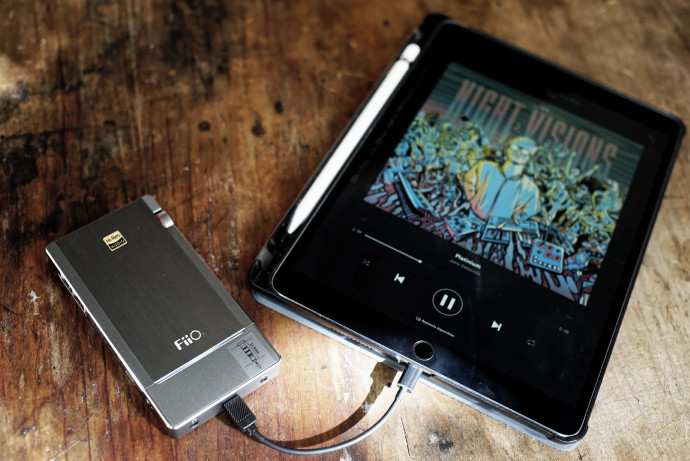
Full specs
Line Out
THD : <0.001% Frequency Response : 5 Hz – 90 kHz (-3dB) Line Level : 1.8 Vrms SNR : > 115dB
Channel Separation : > 97dB
Headphone out Unbalanced (AM3A)
Output power : 230mW @ 16 ohms
Frequency Response : 5 Hz – 50 kHz (-3dB)
Output Impedance : < 1.4 ohms SNR : > 115dB
Channel Separation : > 73dB
THD : < 0.001% Peak Output Voltage : > 6 Vp-p
Max Output Current : 150mA
Headphone out Balanced (AM3A)
Output power : 470mW @ 16 ohms
Frequency Response : 5 Hz – 50 kHz (-3dB)
Output Impedance : < 2 ohms SNR : > 115dB
Channel Separation : > 99dB
THD : < 0.001% Peak Output Voltage : > 10.5 Vp-p
Max Output Current : 150mA
USB sampling rate (max) : 32bit/384kHz
Optical sampling rate (max) : 24bit/192kHZ
Coaxial sampling rate (max) : 24bit / 96kHz
DSD support (through USB) up to 256
Bluetooth 5.0
Supports aptX, AAC, SBC
MFi compliant
DAC : AK4490EN x2
USB : XMOS XU208
Bluetooth : CSR8670
LPF : OPA1642 x2
Volume IC: NJW1195
OP + AMP : AD8620 + OPA926
Weight: 195g Size: 124mm x 64mm x 16mm
Volume Control : Potentiometer (ADC Sampling)
Battery capacity : 3800 mAh
Power Supply : DC 5V / 2Ah
Charge time : around 3.5 hours
The review continues on Page Three, after the click HERE or by using the jump below.





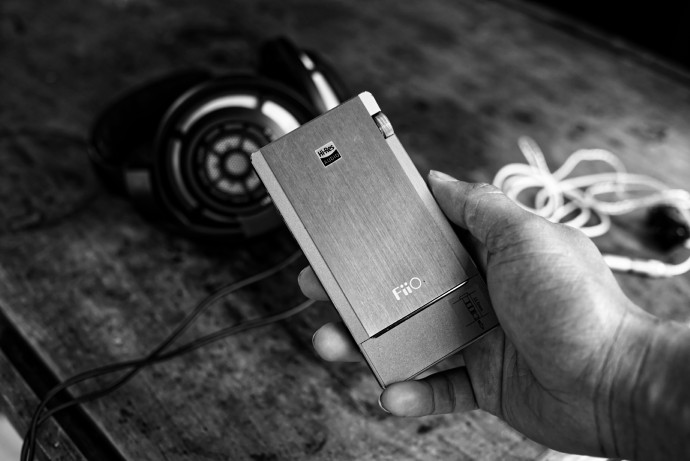
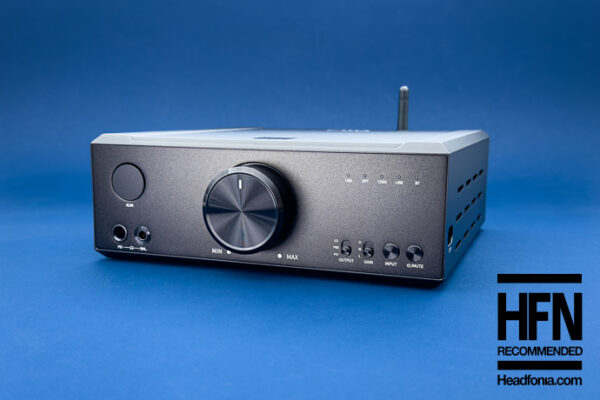
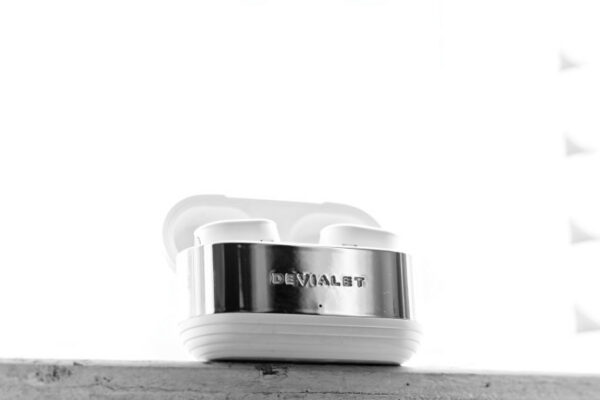
Roxy
Magnificent review, covered all bases with benchmark cans and subjectively written.
Fantastic company, real progressives in the field with accessible un-faustian prices.
Fabulous stuff, well done !
Lieven
Thank you!
M Girvan
I have to agree, the Q5 is one impressive piece of gear, and quite possibly the finest achievement for the company. I was lucky to be selected as part of the head-fi Q5 tour. I was so impressed with it that I just had to buy it and I think it is one of my very favourite purchases and certainly an absolute amazing price to performance piece of kit no doubt about it.
It feels simply wonderful in hand, it looks rugged and aesthetic with a simple, yet bold angular approach. I simply love the feel and positioning of the controls with those wonderful little user friendly design touches like the knurled accents on the volume dial, which is simply fantastic. The Q5 feels like a full on, high quality and sophisticated device.
I don’t agree that the Bluetooth isn’t fully audiophile, that isn’t my experience at all, I simply love the Bluetooth. The Q5 is as fully competent sound wise as the Mojo and with the addition of an amazing Bluetooth implementation, much better looks and form factor, I think the Q5 bests the Mojo. I have been using it via the balanced input with my Pioneer SE Monitor 5. The balanced cable for the Pioneer also fits the Sony Z1R perfectly and I was able to also use the Z1R with the Q5 and the results were absolutely fantastic.
I am absolutely floored by the sound quality of such a portable and affordable device, just pleased as punch. I have no hesitation recommending the Q5. FiiO absolutely answered the bell and delivered. I have also completed one firmware and one Bluetooth update that after a little confusion went without a hitch.
dang vu quoc anh
Can I used q5 as dac for my dx80 ibasso through optic channel or i can only use it as a amp?
thanks!
Greg Wodark
No MQA? Deal killer!
warriorpoet
Same here. Fiio makes incredible stuff, but if they refuse to invest in MQA support, I simply can’t justify the purchase long-term.
Ryan Fehr
Perhaps I’m missing something, but i just can’t seem to get what i would consider quality sound out of this Q5. I’m fairly new to this whole mobile DAC/Amp thing, though i have experience in car audio so I’m not a novice to audio in general. I bought some Hi Res albums (MJ – Thriller in DSD and Avicii – Stories in FLAC). Both sound great on my Sound Blaster on my work computer running through DT770 Pros (although i can’t play true DSD at work). But i can’t get this Q5 to work properly. First, i can’t even update firmware, because the files from Fiio’s website just simply don’t work and there’s no support for the issues. Second, Fiio’s music app sounds terrible and has a non-functional EQ. And third, the “user manual” for the Q5 hardly explains anything. Like, I don’t know when i should be using headphone output vs balanced output vs line out. I don’t even know what balanced output is, other than it’s “better” and none of my headphones fit into it. Which begs the question: should i get a 3.5mm to 2.5mm jack, or does that not work? I’m on the verge of returning this device, because I’m very unimpressed with the SQ. Sure, it sounds good wired playing DSD, but Bluetooth sounds like crap. Definitely not worth $350. Unless I’m missing something…